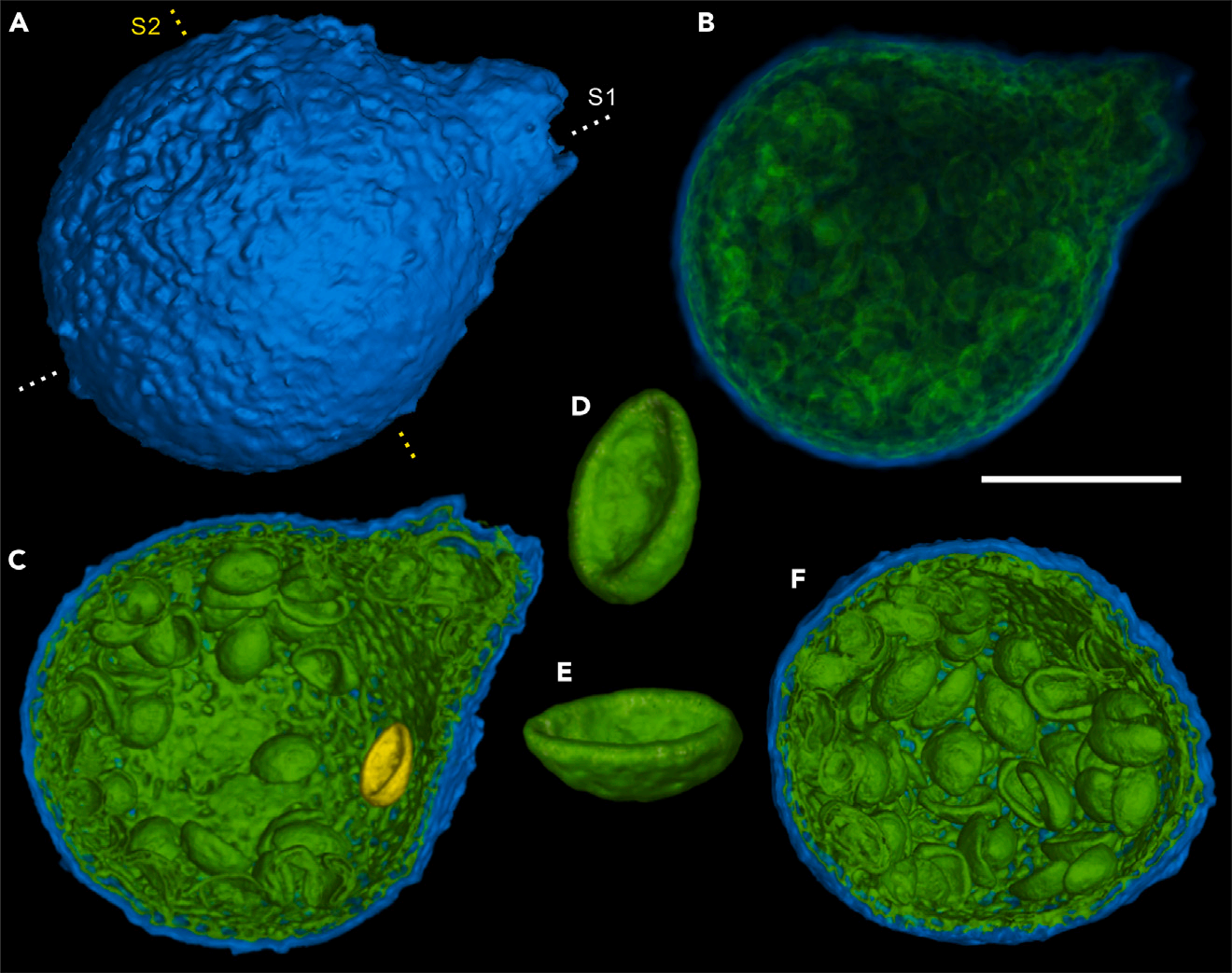
A research group led by Prof. XU Honghe from the Nanjing Institute of Geology and Palaeontology of the Chinese Academy of Sciences (NIGPAS) has for the first time discovered shallow-marine testate amoebae as exquisitely preserved vase-shaped microfossils from the Lower Devonian Cangwu Formation in Guangxi, southwestern China.
The findings were published in iScience.
Testate amoebae are a group of widespread microcosmic protists and stand out with their unique test (shell), usually 20-150 μm in size. As free-living protists, extant testate amoebae are distributed in most freshwater or terrestrial habitats, e.g., river, pond, peat land and soil, but as well as in brackish and marine waters.
It is generally considered that the evolutionary history of testate amoebae could be traced back to the late Tonian (early Neoproterozoic, ca. 800-720 Ma), as evidenced by the extensive records of marine vase-shaped microfossils in this period. However, not much is known about the Paleozoic testate amoeba fossils, as of now.
The oldest unambiguous occurrence of Paleozoic testate amoebae is a freshwater arcellinid species from the Lower Devonian Rhynie chert followed by scattered reports from the upper Carboniferous and Permian.
Knowledge about the internal structures of fossil testate amoebae is also rare. Except few possible reproductive cells or resting cysts in phosphatized or amber-preserved specimens, no any other bio-related structures inside the shells of fossil testate amoebae have been observed.
Based on morphological characters, the researchers interpreted the newly found shallow-marine testate amoebae as a new fossil species of arcellinid testate amoebae. The distinct acetabuliform structures are preserved in the shell of these testate amoeba, and possible sources of these internal structures could be inferred.
"Our newly found testate amoeba co-occurs with several types of plant remains, e.g., Zosterophyllum sinense and some rhyniophytoids, and the recently reported Houia (Euchelicerata)," siad XU Honghe, corresponding author of the study. "It can be suggested that the fossil-bearing horizon represents a shallow-water marine environment."
These fossils extend the record of marine vase-shaped microfossils into the Early Devonian, during which the earliest freshwater testate amoebae occurred. Recent advances in molecular phylogeny and microbial paleobiology of testate amoebae raise a scenario that, within Arcellinida lineages, the marine-freshwater transition probably occurred multiple times and only during the Phanerozoic, and that arcellinids occurred in both the freshwater and shallow-marine environments in the Early Devonian.


Fig. 2 Three-dimensional reconstruction of Cangwuella ampulliformis from the Lower Devonian Cangwu Formation, based on synchrotron radiation X-ray tomography. (Image by NIGPAS)

86-10-68597521 (day)
86-10-68597289 (night)

52 Sanlihe Rd., Xicheng District,
Beijing, China (100864)

